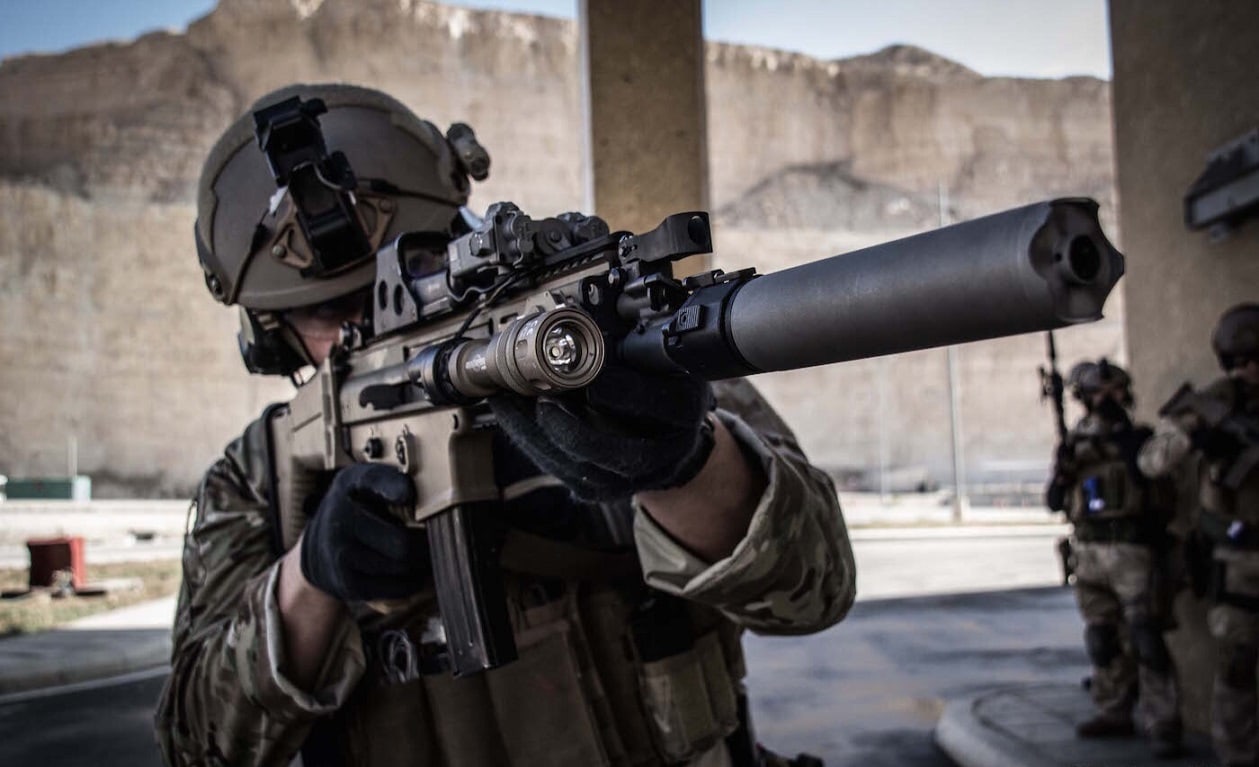We all know now that HK won the Marine Corps Infantry Automatic Rifle competition with the famed M27 IAR. The contest sought out an automatic rifle to replace the M249 SAW as a squad support weapon. The idea was to create a lighter-weight rifle that could suppress with automatic fire and do so with enhanced precision, versus just the traditional volume of fire method. The rifle promised to be lighter, simpler, more reliable, and more accurate than a belt-fed gun.
The Marine Corps loves their M27 IAR so much they’ve now pushed it to the hands of every infantryman. It functions as an automatic rifle, an assault rifle, and a designated marksman’s rifle within the Marine rifle squad. But it wasn’t the only capable platform in the running. In fact, some of these platforms have already found homes in other militaries around the world.
The Other Guns of the IAR Contest
So HK won, history was made, and the Marines love their gun. Who did HK beat, though? What other weapons competed against the HK 416 variant? Well, today, we are going to tackle the four competitors to the HK design that didn’t quite make the cut.
Colt IAR
Colt entering into the realm of the IAR only made sense. They were the original producers of the M16 rifle after purchasing the design from Armalite and went on to produce it alongside numerous carbine variants, and finally, the M4. Colt lost a few contracts to FN along the way, but was an early favorite to win the IAR contest with the Colt IAR. They submitted two variants, the 6940 and the 6940H.
Predictably both guns were built off the Stoner direct impingement design and were essentially a modified AR-15/M16 design. The barrel length was shorter than the M16 and longer than the M4 at 16.1 inches long. The weapon had a cycling rate of between 700 and 1000 rounds per minute. The biggest difference between the IAR and other Colt rifles and Colt installed a massive heat sink into the front of the weapon that doubles as a handguard. This would allow for the increased volume of fire an IAR would be tasked with putting out. The differences between the 6940 and 6940H were minimal.carbines is the front end of the weapon.
Colt installed a massive heat sink into the front of the weapon that doubles as a handguard. This would allow for the increased volume of fire an IAR would be tasked with putting out. The differences between the 6940 and 6940H were minimal.
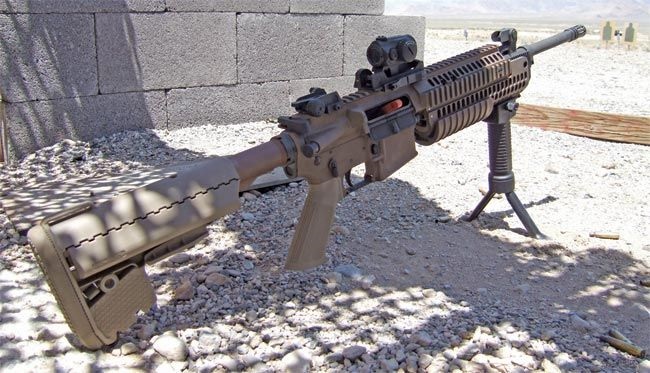
COLT IAR. Image Credit: COLT.
The 6940 features a monolithic upper receiver for maximum stability and weighs 10.1 pounds. The 6940H features a standard upper and utilizes a Knight’s Armament Handguard and weighs 9.28 pounds. The 16.1-inch barrel is a heavy profile barrel to also help with a higher rate of fire—the handguard feature numerous vents to allow for air cooling as well.
LWRC M6A4
LWRC makes premium-grade weapons that have been used in small numbers by special operations troops around the world. Their entry into the IAR contest didn’t make the top 3 but is certainly worth mentioning. The M6 system is largely based on the Stoner design with 80% parts commonality. It, however, uses an internal piston system, as opposed to the Stoner direct impingement design.
The M6A4 utilizes a 16.5-inch barrel that’s free-floated for maximum accuracy and carries a unique system that fires with a closed bolt in semi-auto and an open bolt in full auto. When moving from semi to full auto, the bolt would first fire from the closed bolt and then switch to fire from the open bolt for subsequent automatic fire—this increased first-round ignition reliability and accuracy.
An open bolt design allowed the weapon to fire at a sustained rate while allowing more air to cool the inside of the weapon. Additionally, this helped prevent cook-offs of chambered rounds after sustained fire.
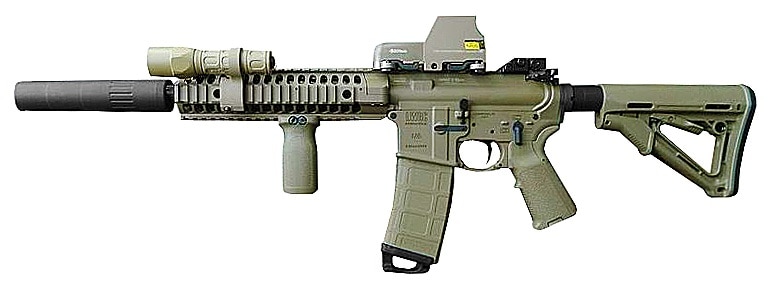
LWRC M6A4
The M6A4 lacked a heavy barrel or heat sink, making it a little less capable for sustained automatic fire. However, the 7.5-pound weight made it approximately the same weight as a standard carbine and the lightest IAR on the list.
Ultimax 100 MK4
The Ultimax 100 MK4 is a Singaporean design with influences and contributions from American firearms designer L. James Sullivan. As a light support weapon, the Ultimax 100 MK5 was a true cross between an automatic rifle and a light machine gun. It’s been around since the 1970s! This light support weapon was built to be the most machine gun-like IAR.
This weapon handles more like an LMG but utilizes the STANAG magazine platform. The MK4 fires from the open bolt with a user-adjustable fire rate of 400 to 600 rounds per minute. The gun uses a constant recoil design which greatly reduces felt-recoil and enhances accuracy.
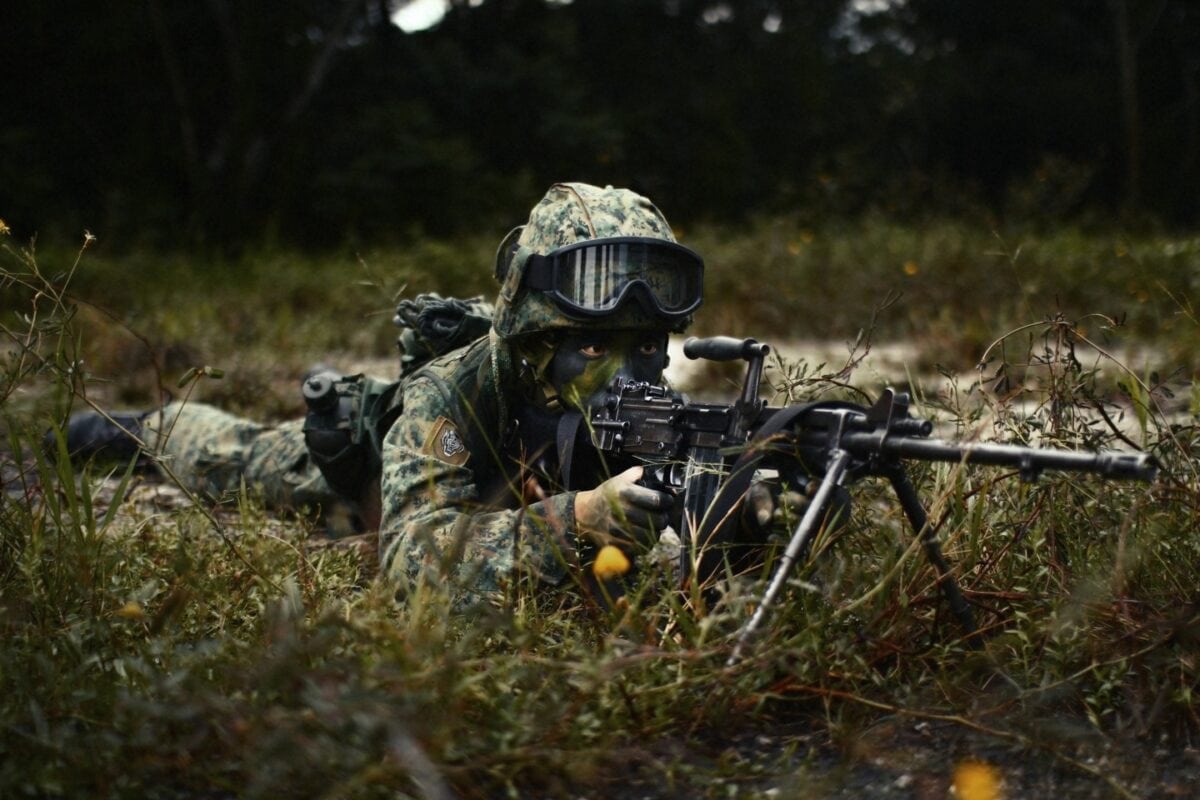
Ultimax 100 MK4. Image Credit: Creative Commons.
Finding specs on the exact model the Marine Corps tested seems to be tough. Variants with 16 inch heavy barrels and short 13 inch barrels are available. Pictures make it looks like the stock can fold, and plenty of Picatinny rails were added for accessories.
Related: How are automatic weapons actually used in combat?
SCAR HAMR
FN SCAR series have been hit or miss with Special Operations use, but they undoubtedly won the naming competition with the HAMR IAR. HAMR stands for Heat Adaptive Modular Rifle. The HAMR is a gas-operated rifle with a short-stroke gas piston system that allows for a folding stock. FN equipped the HAMR with a heat sink to help keep the operator unburned after some sustained fire. The rifle weighed 11.2 pounds and utilized a 16-inch barrel.
What’s fascinating about the HAMR is the operating system. The weapon could fire in the closed and open bolt configurations, and the weapon would automatically switch between open and closed bolt depending on chamber temperature. I can’t find much information on how the system works, but it seems to be unique to the HAMR.
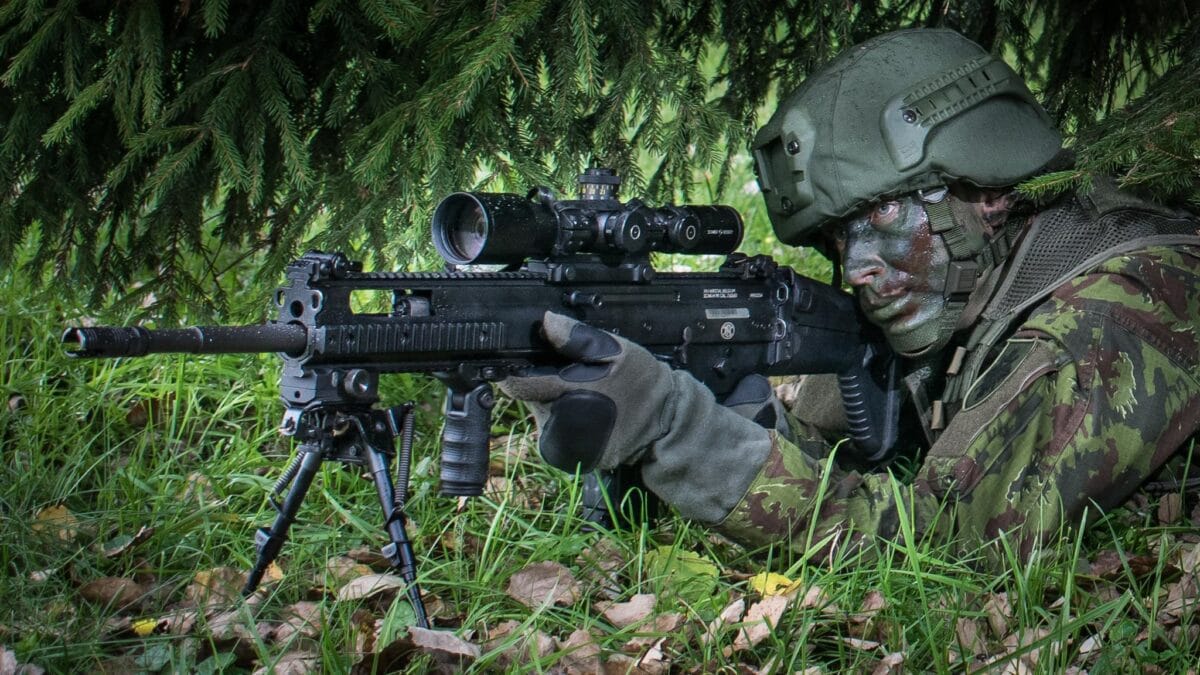
Like the SCAR series, the HAMR provided tons of advanced features, including a polymer lower receiver, a monolithic upper receiver, and a collapsing, folding stock system. Users would also have entirely ambidextrous controls.
The Rifles of the IAR Contest
Without a doubt, the IAR contest showed us some fascinating rifles and ultimately introduced a modern variant of the squad support weapon. Colt saw success with the Mexican Marines with their 6940 IAR, and plenty of countries and military forces adopted the Ultimax 100 in its various configurations. The IAR as a concept has caught fire, and we are seeing the world adapt and adopt as necessary.

CAMP HANSEN — Lance Cpl. Zachary A. Whitman, a shooter with the III Marine Expeditionary Force detachment, familiarizes himself with the M27 Infantry Automatic Rifle in preparation for the Australian Army Skill at Arms Meeting 2012. AASAM is a multilateral, multinational event allowing Marines to exchange skills tactics, techniques and procedures with members of the Australian Army as well as other international militaries in friendly competition. (U.S. Marine Corps photo by Sgt. Brandon L. Saunders/released)
Travis Pike is a former Marine Machine gunner who served with 2nd Bn 2nd Marines for 5 years. He deployed in 2009 to Afghanistan and again in 2011 with the 22nd MEU(SOC) during a record-setting 11 months at sea. He’s trained with the Romanian Army, the Spanish Marines, the Emirate Marines, and the Afghan National Army. He serves as an NRA-certified pistol instructor and teaches concealed carry classes. This first appeared in Sandboxx News.

